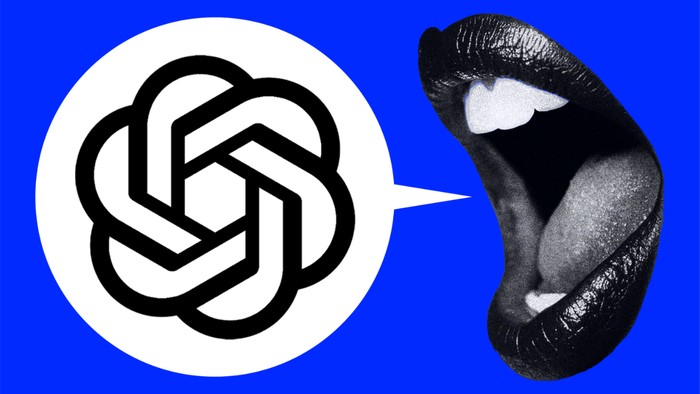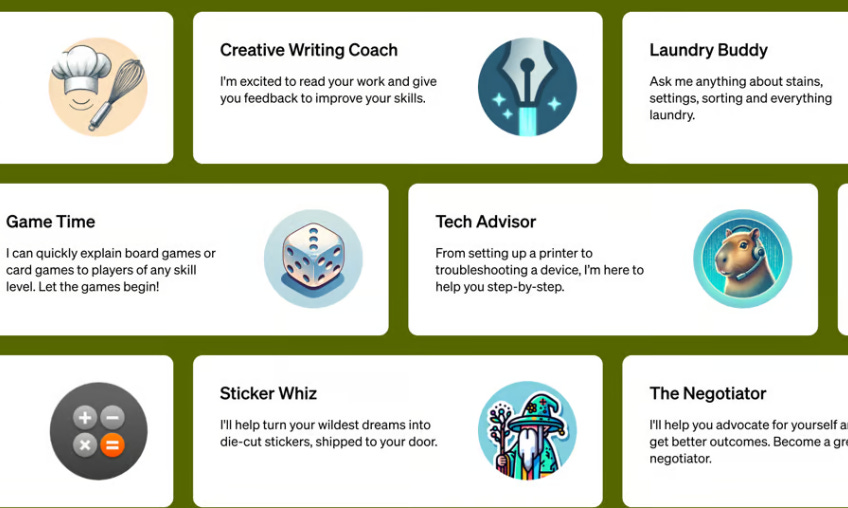
The Dawn of the GPT App Store: Monetizing AI Creativity and Building the New Creator Economy
The Appification of AI: A New Frontier for Creativity and Commerce
The landscape of artificial intelligence is undergoing a seismic shift, moving beyond monolithic, general-purpose models into a vibrant, specialized, and monetizable ecosystem. We are witnessing the “appification” of AI, a pivotal moment reminiscent of when the Apple App Store first opened its doors and unleashed a wave of mobile innovation. OpenAI’s announcement of a forthcoming GPT Store represents a critical inflection point in this evolution. This platform is poised to transform how we interact with, build upon, and profit from large language models (LLMs). For creators, developers, and entrepreneurs, this isn’t just another piece of GPT Models News; it’s the opening of a new economic frontier. It signals a move from simply using AI as a tool to building unique, valuable AI-powered applications and services that can be distributed to a global audience of millions. This article delves into the technical underpinnings, creative implications, and strategic considerations of this emerging ecosystem, providing a comprehensive guide for anyone looking to capitalize on the next wave of the AI revolution.
Section 1: Deconstructing the GPT Store: A Paradigm Shift in AI Application Development
At its core, the GPT Store is a marketplace for “Custom GPTs”—specialized versions of ChatGPT that users can create for specific purposes without writing a single line of code. This development is a cornerstone of recent OpenAI GPT News and fundamentally democratizes AI application development. Previously, creating a specialized AI assistant required significant technical expertise, involving complex processes like fine-tuning models or building intricate applications using APIs. Now, the barrier to entry has been dramatically lowered, empowering subject-matter experts, hobbyists, and businesses to become AI creators.
What are Custom GPTs? The Three Pillars of Specialization
A Custom GPT is built upon the foundation of a powerful base model like GPT-4 but is tailored through a combination of three key components:
- Instructions: This is the “constitution” or personality of the GPT. The creator provides detailed, natural language instructions that define the AI’s role, tone, expertise, and operational boundaries. For example, a “Creative Writing Coach GPT” might be instructed to always be encouraging, focus on “show, don’t tell,” and avoid clichés.
- Knowledge: Creators can upload proprietary data sources—such as PDFs, documents, or databases—that the GPT can reference. This is a form of Retrieval-Augmented Generation (RAG), allowing the AI to provide answers based on specific, curated information not present in its original training data. A “Legal Tech GPT” could be fed a library of corporate legal documents to answer specific compliance questions. This is a major update in GPT Applications News, as it allows for hyper-specialized, domain-specific expertise.
- Actions (Capabilities): This is arguably the most powerful feature. Custom GPTs can be given the ability to interact with external services and databases via APIs. This transforms them from simple chatbots into dynamic agents. A “Travel Planner GPT” could integrate with airline and hotel APIs to book flights and accommodations in real-time, bridging the gap between conversational AI and real-world action. This represents a significant evolution in GPT Agents News and GPT APIs News.
This no-code or low-code approach stands in stark contrast to more traditional methods covered in GPT Fine-Tuning News, which involve retraining parts of the model on large, labeled datasets. While fine-tuning is powerful for teaching a model a new style or format, the Custom GPT approach is far more accessible and agile for building task-specific applications.
Section 2: Under the Hood: Technical Foundations and Creator Challenges

While the creation process is simplified, building a high-quality, reliable, and safe Custom GPT requires a deep understanding of the underlying mechanics and potential pitfalls. Success in this new GPT Ecosystem News will belong to those who master not just the idea, but the execution.
The Art and Science of Prompt Engineering and Instruction Design
The “Instructions” field is the primary programming interface for a Custom GPT. Effective instruction design is a form of advanced prompt engineering. It’s not just about what the GPT should do, but also what it *shouldn’t* do.
- Best Practice: Use clear, unambiguous language. Define roles, constraints, and output formats explicitly. For instance, instead of “Be a marketing expert,” specify “You are a direct-response copywriter specializing in email marketing for SaaS companies. Your tone is witty and authoritative. All outputs should include a clear call-to-action.”
- Common Pitfall: Vague or conflicting instructions can lead to unpredictable behavior. A GPT instructed to be “both creative and strictly factual” may struggle to balance these directives, resulting in inconsistent outputs. Rigorous testing is essential to refine these instructions.
Data Curation and Knowledge Integration (RAG)
The quality of a Custom GPT’s knowledge base directly impacts its value. The principle of “garbage in, garbage out” applies with immense force.
- Best Practice: Curate clean, well-structured, and relevant data. For a “Healthcare FAQ GPT,” this means using verified medical journals and official guidelines, not random blog posts. This intersects with critical topics in GPT in Healthcare News and GPT Privacy News, as handling sensitive data requires extreme care.
- Common Pitfall: Uploading a massive, unstructured data dump will confuse the model and lead to slow, inaccurate retrievals. It’s better to have a smaller, well-organized set of high-quality documents. Creators must also consider the intellectual property rights of the data they upload.
Navigating Safety, Bias, and Reliability
As creators, the responsibility for the behavior of a Custom GPT partially falls on them. OpenAI will have platform-level safeguards, but specialized models can introduce unique risks.
- GPT Safety News & Ethics: A “Financial Advisor GPT” must be carefully instructed not to give personalized financial advice, which could violate regulations. Creators must build in guardrails to prevent misuse. Topics like GPT Bias & Fairness News are paramount; if a knowledge base contains biased data, the GPT will reflect and potentially amplify that bias.
- Reliability: A GPT that relies on external APIs must have robust error handling. What happens if an API is down? The creator must design instructions for the GPT to handle such failures gracefully, informing the user without crashing. This is a key aspect of professional GPT Deployment News.
Section 3: A Tsunami of Innovation: Industry-Specific Applications and Economic Impact
The true significance of the GPT Store lies in its potential to unleash a torrent of niche, highly valuable AI applications across every conceivable industry. This will move the conversation from general ChatGPT News to highly specific GPT Applications News.

Real-World Scenarios and Use Cases
- GPT in Education News: A professor could create a “Socratic Tutor GPT” trained on their course syllabus and lecture notes. It could engage students in a guided dialogue, helping them explore complex topics without giving away the answers directly.
- GPT in Marketing News: A marketing agency could build a “Brand Voice Guardian GPT” for a client. By feeding it the company’s style guide, past campaigns, and brand values, any employee can generate on-brand copy, social media posts, or emails, ensuring consistency at scale.
- GPT in Legal Tech News: A law firm could develop a “Contract Anomaly Detector GPT.” Trained on thousands of standard contracts, it could quickly scan a new document and flag non-standard clauses or potential risks for human review, dramatically speeding up due diligence.
- GPT in Content Creation News: A video game writer could create a “NPC Dialogue Generator GPT” that understands the game’s lore, character backstories, and plot points, enabling them to generate thousands of lines of unique, in-character dialogue for non-player characters. This is a hot topic in GPT in Gaming News.
This platform enables a new class of “AI-preneurs” to build and monetize solutions without the massive overhead of traditional software development. The potential for a creator to earn revenue based on the usage of their popular GPT introduces a direct economic incentive for innovation, much like the mobile app economy.
Section 4: Navigating the New Frontier: Recommendations and Strategic Considerations
For aspiring creators, entering this new marketplace requires a strategic mindset. While the tools are accessible, success is not guaranteed. Here are some key recommendations and a look at the pros and cons.
Best Practices for Aspiring GPT Creators

- Identify a Hyper-Niche: Don’t build a “general writing assistant.” Build a “sci-fi world-building assistant for aspiring novelists” or a “grant proposal writer for non-profits.” Specificity is your greatest advantage.
- Leverage Proprietary Data: The most defensible and valuable GPTs will be those built on unique, high-quality knowledge bases that cannot be easily replicated. Your proprietary data is your competitive moat.
- Focus on Actionable Integration: GPTs that can *do* things via APIs will be more valuable than those that can only *talk*. Think about what real-world problem you can solve by connecting your GPT to other services.
- Iterate Relentlessly: Your first version won’t be perfect. Use feedback from early users to continuously refine your instructions, update your knowledge base, and improve your GPT’s performance. This agile approach is key to staying relevant in a fast-moving market.
Pros and Cons of the GPT Store Model
Pros:
- Massive Distribution: Instant access to ChatGPT’s enormous user base, solving the biggest challenge for any new application: discovery.
- Low Technical Barrier: Enables non-coders and domain experts to build and ship sophisticated AI products.
- Monetization Framework: Provides a clear, albeit yet-to-be-detailed, path to earning revenue from your creations.
Cons:
- Platform Risk: You are building on someone else’s platform. Changes to OpenAI’s policies, revenue-sharing model, or underlying technology (e.g., the release of GPT-5 News) could dramatically impact your business.
- Intense Competition: The low barrier to entry means the marketplace will likely become crowded very quickly. Differentiation will be crucial.
- Intellectual Property Concerns: The legal and ethical lines around data ownership and the outputs of models trained on that data are still being drawn. Creators must be mindful of GPT Regulation News and GPT Privacy News.
Conclusion: The Dawn of the AI Creator Economy
The emergence of platforms like the GPT Store is more than just an exciting product launch; it is the dawn of a new creator economy powered by artificial intelligence. It democratizes the ability to build and distribute specialized AI, shifting the focus from the underlying GPT Architecture News to the creative and practical applications built on top of it. This new ecosystem will empower a generation of creators to solve niche problems, build innovative tools, and create novel experiences in ways that were previously unimaginable. While challenges around safety, competition, and platform dependence certainly exist, the opportunity is immense. For those in the fields of creativity, technology, and business, the message is clear: the age of passively using AI is over. The age of actively building the future of AI has just begun. The latest GPT Trends News points towards a future that is not just intelligent, but also customized, specialized, and economically empowering for all.



